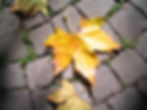





Growing Green
Exploring the science and significance of sustainable gardening.
A WebQuest based on Alberta Grade 10 Science curriculum.
Imagine the Possibilities of "Growing Green"
Stephen Ritz is a teacher in South Bronx, New York. He energetically recounts how his students nurture gardens to grow hope.
The 21st century has ushered in a world with great new technology, capacities for connectivity, advancements in science and a greater awareness of global issues. Some argue that our world is in a crisis; our actions may have helped us grow but often at the detriment to our planet and to our future generations.
You have probably heard about climate change, carbon footprints, obesity epidemics and food shortages on the internet or in school. These are all real issues because as a society and culture, we can be excessive and irresponsible in how we use energy—instead of growing our own food we import it through transportation methods that all run on oil and pollute the environment; we eat fast foods that are low in nutrients and high in calories; and we waste food that is already overproduced or its ingredients could have been used by another country.
One way we can start fixing these problems is to grow our own food locally using organic materials and sustainable techniques—sustainable gardening/horticulture.
Growing and tending to a garden requires knowledge of science, such as soil chemistry (pH, salinity and nutrient cycles), the interactions between different organisms and microorganisms (ecosystems), what plants require to flourish and general organic/sustainable gardening techniques.
In this WebQuest activity, you will “dig deeper” into the issues that make sustainable horticulture necessary, the scientific concepts and techniques behind gardening and finally, the possibilities of how you can create or participate in the culture of sustainable gardening in your community.
To show you that this last point is not impossible, watch the inspiring TED talk below about how a teacher and his students created a garden to contribute to environmentalism and to spread the seed of hope.
